Saturday, March 26, 2005
Silvered AE antoninianus, Gallienus, Cyzikus, Göbl 1529Aevar
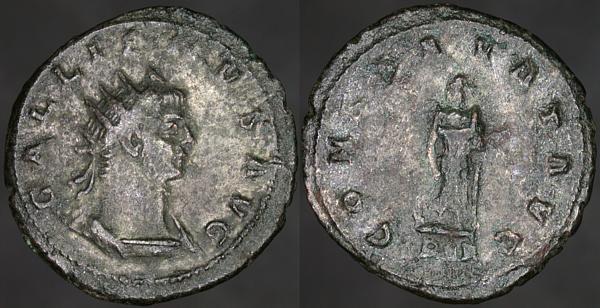
GALLIENVS AVG, Radiate cuirassed bust right, no pellets beneath | CONSERVAT AVG, Aesculapius standing left holding a rod around which a serpent is entwined. SPQR in exergue.
Göbl doesn't list this reverse legend from this mint. He does list a CONSERVATOR AVG otherwise like this, but this mint, which began producing imperial coins very late in the reign of Gallienus, is the least-well attested and the existance of unlisted variants like this isn't impossible.
RIC 229 for Claudius Gothicus does show this reverse, with this short legend, as part of his first emission from Cyzikus.
Friday, March 25, 2005
Æ25, Augusta Traiana in Thrace, Gallienus, Varbanov 520
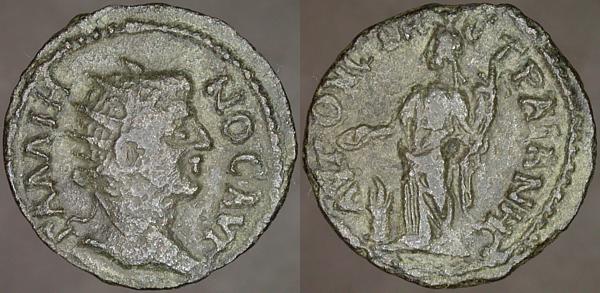
ΓAΛΛIH_NOC AVΓ, Radiate head right | AVΓOVCTHC TPAIANHC, Homonia standing facing, head left, holding cornucopia right, sacrificing from patera over flaming altar left.
During the first few weeks after I bought a "Cool-Light" (eight continuous LEDs arranged in a ring that mounts concentric to the lens) for my camera, I was using it for every coin I photographed. I've since decided that this multi-directional light is best used on highly-reflective surfaces, where it minimizes glare, and not at all on less-reflective patina surfaces, where it seems to emphasize every ding and divot, making a coin like this look as though it had suffered attack with a ball-peen hammer.
Thursday, March 24, 2005
Æ antoninianus, Gallienus, Antioch, Göbl 1632(2)
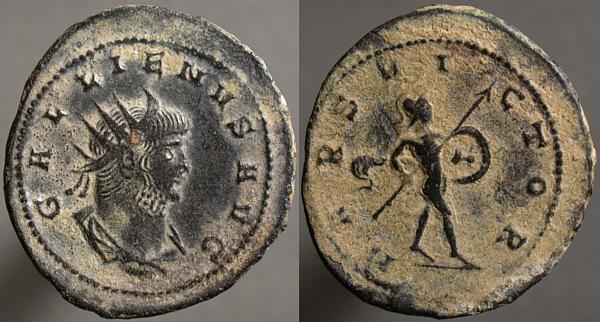
GALLIENVS AVG, Radiate draped cuirassed bust right | MARS VICTOR, Mars advancing right, wearing helmet, carrying spear and shield.
This shows a nice example of "desert patina," which yields a light-colored background which contrasts very nicely with raised areas of the coin which are free of the patina. This patina certainly makes coins more desirable.
I haven't seen anyone else say so, but I think that such a patina is readily faked and that while I have no reason to suspect this coin, I think the market is full of coins with faked desert patina.
Wednesday, March 23, 2005
AR denarius, Tiberius Claudius Nero, 79 BCE, Roman republic, Crawford 383/1
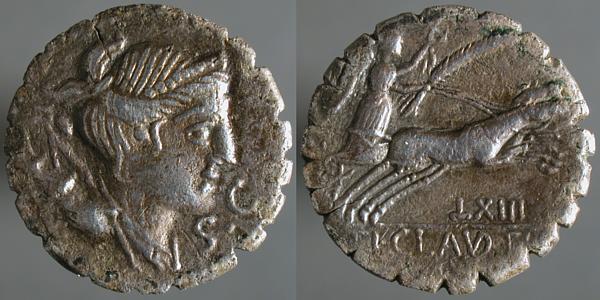
Diademed draped bust of Diana right wearing bow-case and bow. S.C. below chin | Victory holding wreath and palm-branch in a biga galloping right. Beneath, inversed TXIII, TI·CLAVD·TI / [F·AP·N] in exergue
Roman families constantly reused names, and I'm not certain, but I think the Tiberius Claudius Nero who issued this an otherwise unremarkable older uncle of the Tiberius Claudius Nero was the "birth father" of the emperor Tiberius.
The reason for the serrate edge is widely debated. It's often argued to be an anticounterfeiting measure, but if so, it was used only intermittently and then with only limited success.
Tuesday, March 22, 2005
Æ30, Side in Pamphylia, Salonina, unknown
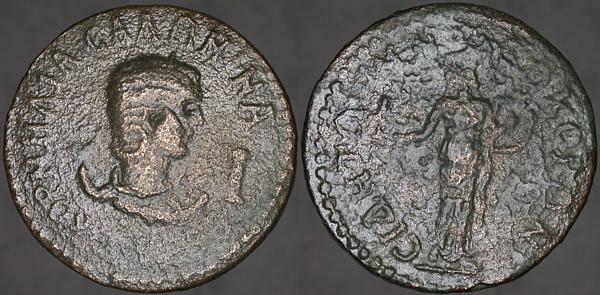
KOPNHΛIA CAΛΩNINA [CEBA], Diademed draped bust right on crescent, I before, breaking legend | CIΔHTΩ_N N_EΩKOPΩN, Athena standing facing, head left, holding Nike left and spear and shield right.
When Valerian and his son Gallienus were raised to emperor, the "silver" coins of Rome were so fully debased that adding more bronze to the alloy produced a coin that wasn't silver in color. Needing to further reduce their intrinsic value while maintaining their public acceptance, one or more techniques were developed for producing a silvery surface on a bronze coin.
With that done, the actual intrinsic value of the as, dupondius, and sestertius exceeded that of the lighter-weight "antoninianus", which was probably tariffed at eight sestertii (
But in the eastern provinces production of large bronzes, like today's coin, seems to have continued, perhaps as a matter of civic pride, and only slowly did cities stop minting, one at a time. A few were still in production at the death of Gallienus, issuing coins for his successor.
(Egypt, where Imperial coins did not circulate, continued issuing their own coins until order was restored after the revolt of Domitius Domitianus in 295-296, when they adopted, and minted, Imperial coins).
Monday, March 21, 2005
Æ antoninianus, Gallienus, Rome, Göbl 662w²
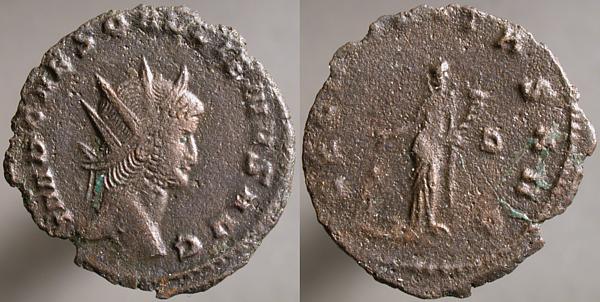
IMP CAES GALLIENVS AVG, Radiate head right | FECVNDITAS AVG, Fecunditas standing facing, head left, holding cornucopia right, reaching down to child, left. Δ in right field.
I find myself wanting to start many of these ports with "Well this is interesting", but being unsure if anyone else will find it so.
Mule is used to describe a coin minted from mismatched obverse and reverse dies. There's no reason to expect to see Fecunditas, the personification of human fertility, matched with the emperor's portrait. This reverse is rather common for Salonina, as here.
Göbl, in the Hybride appendix, plates a number of mules of this reverse, but all with the shorter obverse legend GALLIENVS AVG, listed along with the short-legend version for Salonina.
With its longer obverse legend, this would seem to be contemporary with the CORNEL SALONINA AVG or COR SALONINA AVG issues. Conveniently, both of those are shown as members of row 662 in Göbl's attribution grid, which has a column for this obverse, so it slots right in.
Sunday, March 20, 2005
Æ33, Lyrbe in Cilicia, Valerian, SNG Levante 290 (this coin)
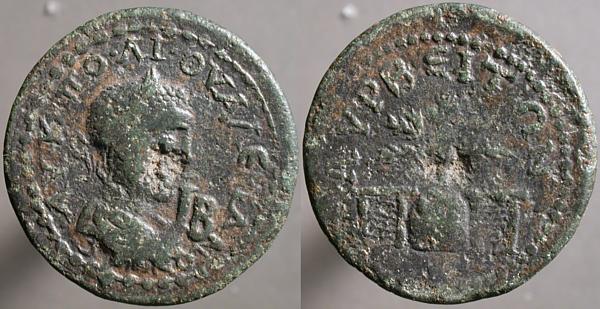
AV·K·Π·ΛI·OVAΛEPIANON[·]C·, Laureate draped cuirassed bust right, IB before | ΛVPBEITΩN, Sacred tree over baetyl, between two railings.
Yet another recent acquisition that had belonged to Eduardo Levante, this shows a religious sanctuary with a baetyl, an abstract representation of a god, derived in at least some cases from a meteorite.

